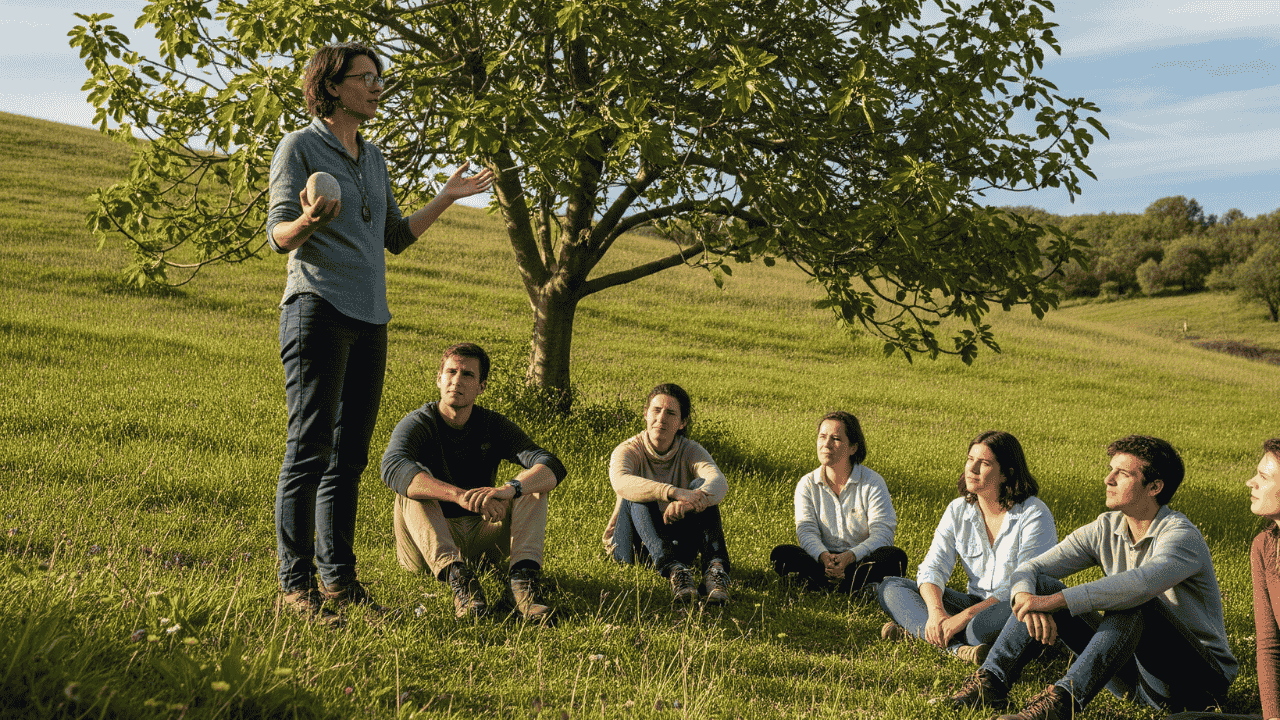Allegory means more than most people think. It’s not just a clever word from English class or a label on an old book. It’s a tool. A trick. A method for saying something big using something small. When done right, allegory teaches without preaching and sticks without shouting.
Imagine a quiet hillside. A teacher stands near a fig tree, holding a smooth stone in one hand. In front of him, a crowd sits on the grass, dust rising from their sandals. He begins with a story. Not about politics or religion directly, but about a man planting seeds. That’s allegory. It’s teaching hidden in plain sight.
TL;DR
- What allegory really means and where the word comes from
- Why it teaches better than direct instruction
- Where it shows up in old texts and modern stories
- How to tell the difference between allegory and metaphor
- Why some people miss it and why that’s okay
- Five questions to ask when you think a story might be allegorical
What allegory means at its core
At its simplest, an allegory is a story that works on two levels. One is the literal story. That’s the part with characters, places, and events. The other level is hidden. That’s where the real meaning lives. The surface is what happens. The deeper level is what it means.
The word comes from Greek. “Allegoria” combines “allos,” meaning “other,” and “agoreuein,” which means “to speak in public.” So the word itself means “to say something other.” You say one thing, but mean something else.
It’s not the same as a metaphor. A metaphor compares two things directly. “The world is a stage.” That’s a metaphor. Allegory stretches that idea into a whole scene or story. It’s like a metaphor that takes a long walk.
In an allegory, everything has a purpose. The characters might be symbols. The setting might reflect an idea. The plot might show a moral. It’s not hidden for the sake of mystery. It’s hidden so the meaning can unfold over time.
Why allegory works better than just telling
People forget lectures. They remember stories. That’s one reason allegory matters. It doesn’t just pass on facts. It helps people feel them.
Allegory gives you space to figure out the meaning for yourself. When someone tells you a truth directly, it can feel like pressure. But when a story leaves space between the lines, the message lands with more power.
Take a story about a traveler who helps a stranger on the side of the road. It’s not labeled as a rule. There’s no lecture about kindness. But the story stays in your mind. That’s the parable of the Good Samaritan. A short tale. A long impact.
Allegory also helps when the topic is dangerous. In places where speaking out is punished, storytellers use symbols. They might write about animals or ghosts or imaginary lands, but the real topic is power, freedom, or fear.
The truth hides in the fiction. And that’s the point.
Where allegory shows up in real life
One of the most famous allegories is Plato’s cave. He described people chained inside a dark cave. All they can see are shadows on the wall. They think that’s reality. But one person breaks free, sees the real world, and returns to tell the others. They don’t believe him.
On the surface, it’s a story about shadows and sunlight. But it’s really about knowledge, ignorance, and the struggle to see the truth.
The Bible uses allegory constantly. Christ taught in parables, which are short allegorical stories. A woman losing a coin. A shepherd searching for a lost sheep. A man forgiving a huge debt. These stories teach values, but they do it with scenes people can picture.
More recent examples include Animal Farm by George Orwell. It’s a story about pigs and horses running a farm. But it mirrors the Russian Revolution. The animals aren’t just animals. They stand in for political leaders, workers, and citizens.
Another is The Lion, the Witch and the Wardrobe by C.S. Lewis. On the surface, it’s a fantasy story. Underneath, it’s about sacrifice, resurrection, and redemption. Aslan the lion is a symbol for Christ. The winter in Narnia reflects spiritual darkness.
Even movies like The Matrix or Inside Out use allegory. One’s about machines, but also about waking up to reality. The other’s about emotions turned into characters. Kids watch it for the fun. Adults feel the weight behind it.
How allegory is different from metaphor and symbolism
People mix these terms up, and that’s fair. They’re related. But each does something a little different.
- Metaphor is a figure of speech. One thing becomes another. “Her voice is music.”
- Symbol is an object that stands for something else. A red rose might mean love.
- Allegory is a full story or scene that works on two levels. Every part connects to a bigger idea.
In a metaphor, the comparison might last a few words. In a symbol, it’s often just one thing. But allegory stretches across a whole plot.
One simple trick: if the story still works on its own, but seems to mean something more, you might be looking at allegory.
Why some people miss allegory
Not every reader notices allegory right away. That’s normal. Some stories are clearer than others. Some writers want their message to be obvious. Others bury it deep.
Allegory doesn’t require the audience to “solve” it like a puzzle. It’s not a riddle with one right answer. Sometimes different people see different things in the same story. That’s not a mistake. It’s a feature.
In fact, some writers never admit they wrote an allegory at all. C.S. Lewis said The Chronicles of Narnia weren’t allegory but “supposal.” He supposed what would happen if Christ appeared in another world. But readers still treat it like allegory because the patterns are strong.
The line isn’t always clear. And that’s okay.
What matters is that the story makes people think.
Five questions to test if a story is allegorical
If you think something might be an allegory, ask yourself:
- Do the characters represent ideas or types, not just individuals?
- Does the setting mirror a system or worldview?
- Is the plot more symbolic than realistic?
- Does the story feel like it teaches a moral or message without saying it directly?
- Can the events be mapped onto something else, like politics, religion, or psychology?
If you answered yes to three or more, you’re probably looking at allegory.
So why does allegory still matter?
Allegory teaches without preaching. It creates space to explore ideas safely. And it helps people carry big truths in small stories.
Kids can understand it. Adults can unpack it. Even when someone doesn’t know the word “allegory,” they still feel its pull.
It doesn’t need a label to work. It just needs a good story and a hidden layer.
Next time you hear a fable or watch a film that sticks with you longer than it should, ask why. There might be more happening than meets the eye.
Not Just Storytelling With a Wink
- Allegory is a layered story that teaches through symbols
- It’s not the same as metaphor, though both use comparison
- Ancient thinkers, religious teachers, and modern creators all use it
- Some allegories are bold; others are subtle
- You don’t need to decode them fully to feel their power
- Look for characters, settings, or plots that point beyond themselves


